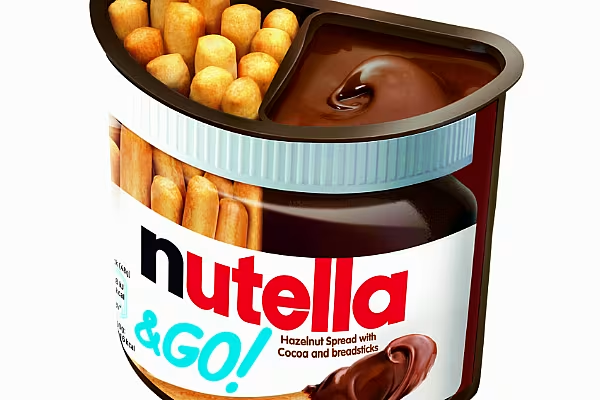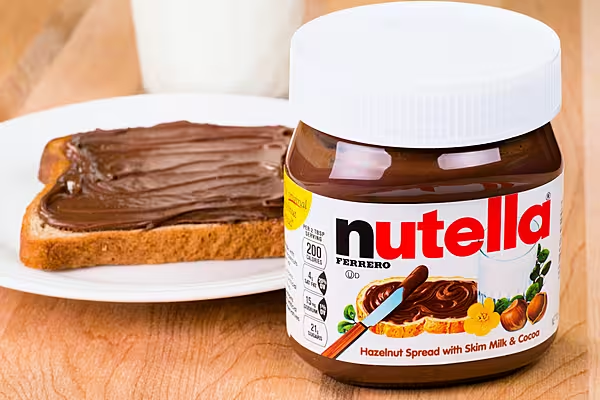U.S. consumers are putting more of their Nutella on toast and less on ice cream, and now the federal government may change its view of the smearable treat.
The Food and Drug Administration is looking into reducing Nutella’s serving size to one tablespoon from two because Americans are now using the chocolate-hazelnut spread on bread in the morning, instead of mostly dolloping it on their desserts. That would effectively cut in half the fat and calories consumers see on the label.
Ferrero SpA, the closely held maker of Nutella, has marketed the spread as a breakfast replacement for butter and syrup on pancakes, or to scoop on bread and fruit. The Italian company petitioned the FDA in 2014 to change its serving size to one tablespoon, which would put it on par with honey, jam and jelly.
That led the agency on Tuesday to seek information on flavored nut-butter spreads, their intended use and typical consumption amounts, according to a document posted online. If the FDA agrees with Ferrero, then consumers could see half the amount of calories and fat, which currently stand at 200 and 11 grams, respectively. The U.K., France and Australia, among other countries, use the one-tablespoon serving size, according to Ferrero.
The confection company didn’t respond to requests for comments during Italy’s celebration of All Saints Day on Tuesday.
Other Toppings
The FDA is responsible for establishing “reference amounts customarily consumed,” or RACC, for 139 food-product categories, including cookies, egg rolls, coffee, dry pasta, butter, canned fruits and tofu. The RACC designation helps determine a serving size. In 1993, the FDA ruled that Nutella fell into the product category called “other dessert toppings.”
The two-tablespoon serving size on the U.S. label might lead people to believe they should be using that amount on their toast or sandwich and confuse consumers when compared with other spreads that have a smaller serving size, Ferrero told the FDA.
“Because Nutella is used in the same manner as jams and jellies, uniformity in RACC values among Nutella, jams, and jellies would enable consumers to make informed nutritional comparisons of these similar products,” Ferrero wrote in its petition.
Nutella is made from sugar, palm oil, hazelnuts, cocoa, milk, lecithin and vanillin. Ferrero, which also makes Kinder chocolate and Ferrero Rocher confections, consumed 25 percent of the world’s hazelnut supply in 2014.
Nutella held a 70 percent market share for chocolate spreads in the U.S. in 2013, according to market researcher Euromonitor. Other chocolate makers, including Hershey Co. and J.M. Smucker Co., have entered the cocoa-based spread market over the past few years, and a change in serving size could benefit them as well.
In the U.S., 74 percent of Nutella was used on bread in 2012, compared with 2 percent on ice cream, Ferrero said in its petition. That’s a drastic change from 1991, when Americans consumed 8 percent of their Nutella on bread and 27 percent on ice cream.
News by Bloomberg, edited by ESM. To subscribe to ESM: The European Supermarket Magazine, click here.














